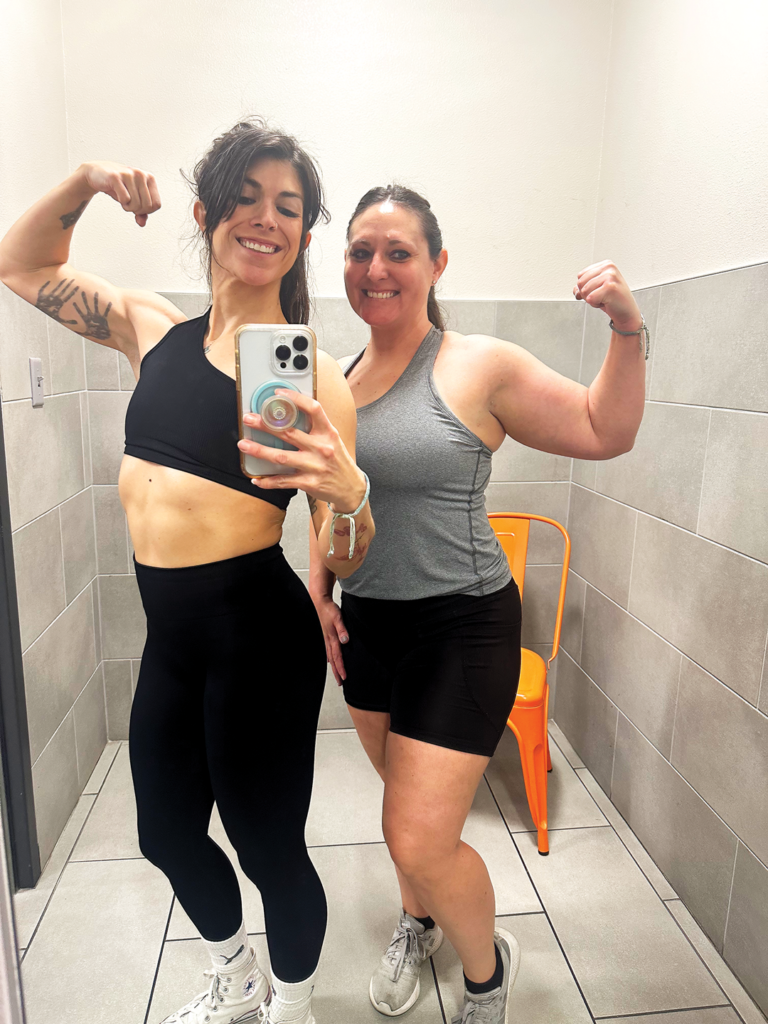As swimsuit season approaches, many of us feel pressure to get our bodies “summer-ready,” resulting in stricter diets, longer gym sessions and other last-ditch efforts to shed a few pounds. However, these methods aren’t always healthy, and they can even have the opposite effect. The answer? Doing less.
“You’re doing too much, and you’re not doing it well,” says Morgan Hoover, a local registered dietitian with a virtual practice, of the people doing crash diets and overexercising in anticipation of summer. “There’s so much noise out there, and people are overwhelmed by the amount of conflicting information. When you’re getting it from every angle, you start to lose trust in yourself and your innate ability to properly feed and care for yourself.”

Morgan Hoover
The first step, Hoover says, is to understand where the pressure is coming from. When you get on social media, are you bombarded with wellness influencers preaching about the latest health trends? Do your family members make negative comments about others’ appearances, or even your own? Once you identify the source, she says, you can click unfollow, set boundaries and turn inward to reconnect with your body.
From restrictive to intuitive
A lot of people think that if they reduce their calorie intake, they’ll lose weight. But that’s not necessarily the case, says Christine Davis, a local registered dietitian and founder of her virtual practice, Food Exploring Dietitian.
“If you eat less, your body is going to go into fight or flight and store all the food you eat. You’re going to start gaining fat, and it’s going to cause more stress on your body,” Davis says. “If you eat regularly throughout the day and eat well-rounded meals—what your body actually needs—then it can function a lot better, and you’ll lose weight.”

Christine Davis. Photo by Meger Media.
Davis recommends eating small meals every three to four hours to stabilize your energy and blood sugar throughout the day. That way, you avoid crashing, overeating and giving into cravings, which are usually carbs, the quick energy source your body needs but also stores as fat.
“If you’re eating regularly…your body can rest and digest and know that food is going to be coming,” Davis says. “It’s like, ‘I know what’s going to be coming, so I can get rid of all this extra stuff and utilize this energy.’”
She also notes that you don’t want to eliminate entire macronutrients—carbohydrates, protein and fat—because they each serve an equally important purpose in the body.
“If you think of a car, we don’t just put gas in it,” she says. “We put oil and gas and windshield washer fluid and all these different things in it to make it run well. We need to put all these different components into our body to make it function correctly.”
For anyone who isn’t sure what constitutes a well-balanced meal, Davis recommends the “plate method,” which divides the plate into three sections:
half of it for color (non-starchy vegetables and fruit), a quarter for grains and starches and a quarter for protein. You should also add a serving of healthy fats and a serving of dairy for calcium, she says.
There’s also the 80-20 rule, which states that 80 percent of the food you consume should be nutritious and the other 20 percent can be indulgent items, like baked goods and ice cream. That regimented way of thinking is helpful for some, Hoover says, but for others, it can perpetuate a black-and-white mindset about foods as either “good” or “bad.”
“Food and our bodies are not moral,” Hoover says. “You can explain carbs as a spectrum: There are things on one end that are more nutrient-dense, like whole grains, beans, fruits and vegetables, and on the other end, you have things like cake and chips. Having more on the first end of the spectrum is good, but that’s not to say you don’t ever want the ones on the less nutrient-dense side.”
The more you restrict certain foods, the more you’ll want them and, as Hoover points out, incorporating foods you enjoy is part of experiencing life. The important thing, she says, is to listen to your body’s hunger signals to determine what to eat and when, otherwise known as intuitive eating.
“Some people think intuitive eating is eating whatever you want, but that’s not true,” Hoover says. “Intuitive eating is saying, ‘I’m going to go out and celebrate later, but I’m still going to eat a well-rounded lunch with vegetables, protein, starch, whatever, so I won’t be ravenous by the time I get to dinner.’”

Cori Juelfs (left) with friend Brandi Barrett.
A healthy amount of exercise
When clients come to Cori Juelfs for help getting their body “summer-ready,” she asks them what their goals really are. Maybe they want their clothes to fit better, or they want more muscle definition. Many times, what they’re looking for is confidence.
“Maybe it’s, ‘Let’s see how strong we can get by summer,’” Juelfs says. “Let’s set healthy goals where we’re motivated more by what our bodies can do for us and make it more positive than being motivated by a number.”
Juelfs, a coach and personal trainer who teaches group fitness classes at Onyx Athletics in Windsor and Crunch Fitness in Fort Collins, helps her clients set realistic, sustainable goals in the gym. Rather than pushing them into the red with high-intensity workouts, she helps them find a balance of strength training and cardio with low-impact exercises.
For most people, she recommends working out for 30-60 minutes three days per week and incorporating both strength training and cardio exercises. That ratio depends on the person, she says, but in general, 70 percent weight lifting and 30 percent cardio is a good balance for fat loss.
“Strength training gets your metabolism going, and your body builds lean muscle,” she says. “When you talk about wanting to drop a few pounds, you want your heart rate to be in that fat-burning range for cardio, which is 60-70 percent of your maximum heart rate.”
Celebrate non-scale wins
A lot of those goals—building strength, gaining confidence, feeling good in your clothes—are what Davis calls “non-scale wins.” Focusing on those things, along with drinking plenty of water, getting good sleep and managing your stress, will lead to physical transformation, she says.
It’s also important to give yourself grace, Davis says, especially when it comes to food. One way to accomplish that is by thinking of food as fuel (even the bag of potato chips or candy bar).
“I like to focus on how you can fuel your body well to care for it so you can do fun summer things and enjoy life,” she says. “If you’re depriving yourself of food, you’re not going to have the energy to go for that hike or go swimming. Use food to live life to your fullest.”
___________________________________________________________________________________
Breaking Down Macronutrients
Macronutrients play a vital role in our overall health. Here’s what they do, according to our sources:
Carbs: A quick energy source that fuels the body and brain. Many carbs (like fruits and starchy vegetables) also contain micronutrients, including vitamins, minerals and antioxidants.
Protein: A long-term energy source that maintains and repairs muscles (even involuntary ones, like the heart) and reduces spikes in blood sugar. Protein is also essential for hair and skin health.
Fat: The primary way our bodies store energy. Fats play a role in hormone health and the nervous system, and many micronutrients need it for optimal absorption.







